What if your next product launch hinged on one decision: how you’re hiring Frontend Developer talent this quarter? If conversion, performance, and brand polish matter, then hiring Frontend Developers in the US is not just a task; it’s a growth lever. The proper dev ships a clean UI, defends performance budgets, and turns design into a fast and accessible experience that people actually use.
So how do you pick a winner without wasting weeks? Start with clarity, not chaos. Define outcomes, map a straightforward process, and conduct interviews for real-world problem-solving. Below is a practical blueprint for hiring and managing Frontend Developers in the US, similar to what a seasoned tech lead would do.
What “great” looks like in 2025
A modern frontend is more than just pretty screens. Your hire should ship an accessible UI, manage state cleanly, and maintain Core Web Vitals within a healthy range. That means strong TypeScript, component-driven thinking, smart API usage, and empathy for real users on real devices.
Non-negotiables:
- Production-level React, Next.js, or similar modern stack
- TypeScript fluency and thoughtful state management
- Accessibility-first mindset (keyboard, contrast, ARIA)
- Performance discipline (LCP, INP, CLS, caching, images)
- Testing habit (unit, integration, and visual regression)
- Clear writing and async communication
Hiring Frontend Developers in the US: Step-by-step
1) Set the brief like a product spec
Create a one-pager that your employee may act on: Identify the user, routes, essential interactions, success metrics, and guardrails. Keep interviews grounded in reality and anchor your hiring process for a frontend developer to outcomes.
Include:
- Pages and components you’ll ship in the next 60 days
- Performance targets (LCP under 2.5s on 4G, CLS under 0.1)
- Accessibility goals and devices to test
- Collaboration model with design and backend
2) Source with intent, not hope
Not just any old job boards will do. Portfolio sites, OSS contributions, and technical groups are all places where talented people show off their work. Make your outreach concise, precise, and impactful. Explain the stack, the team’s habits, and the way they plan to grow. If you want to hire Frontend Developers in the US, talk about your stack, how your team works, and how you plan to grow.
3) Screen for signal in 20 minutes
Have a short, clear call to start things off that quickly covers the must-haves. You’re reading about how they communicate with you, who is responsible for the work, and whether the work they’ve sent you meets your current needs.
Ask:
- “Walk me through a component you’re proud of. What made it hard?”
- “How did you improve a slow page? What moved LCP most?”
- “Show a trade-off you made between DX and performance.”
4) Portfolio and code review that actually predicts success
Give candidates space to demo shipped features, not slides. Focus on depth over flash.
Look for:
- Clear folder structure and reusable components
- Type safety and meaningful tests
- Thoughtful image strategy (AVIF/WebP, responsive sizes)
- Evidence of accessibility work and performance budgets
5) Practical exercise, real scope, short time
Instead of an extended take-home test, give them a tiny, practical activity. Twelve to eighteen hours total is enough. Provide a design file, an API, acceptance criteria, and a test matrix. Be transparent about time expectations. A small, real task surfaces judgment quickly and speeds up hiring decisions for Frontend Developers.
Evaluate:
- Pixel-to-component fidelity without overengineering
- State decisions and error handling
- Accessibility, keyboard flows, and focus management.
- Performance hygiene and basic tests
6) On-site or virtual deep dive
Now pressure test collaboration. Pair for ninety minutes to scope an improvement to the exercise: add pagination, fix CLS, and wire analytics. Keep cameras on, screens shared, and let them drive.
Signals you want:
- Calm problem-solving and clear narration
- Healthy pushback when requirements conflict
- Pragmatic sequencing (MVP first, polish next)
7) Reference check with real questions
Talk to their old bosses about how reliable they were, how good their code was, and how they handled stress. Verify how quickly they shipped value after onboarding. A solid reference will map strengths to the exact Frontend Developer Roles you have.
Skills checklist you can trust
Use this quick list to keep the Frontend Developer Skills evaluation clean.
- Core stack: React or Vue, plus Next.js/Nuxt (or comparable SSR/SSG)
- Language: TypeScript, modern JS patterns
- Styling: CSS modules, Tailwind, or styled systems with discipline
- State/data: React Query/Zustand/Redux, caching, pagination
- Performance: image pipeline, lazy loading, code splitting
- Accessibility: semantic HTML, ARIA, keyboard, color contrast
- Testing: Jest/Vitest, RTL/Cypress, snapshot/visual tests
- Tooling: Git hygiene, CI, preview links, linting, formatting
Interview questions that separate good from great
- “Show me where you measured performance and how you improved it.”
- “How do you keep design systems consistent across products?”
- “What trade-offs do you use to decide between SSR and SSG?”
- “What are your plans for testing and planning authentication and protected routes?”
- “Walk me through an a11y bug you fixed and the impact.”
Compensation, offers, and close
You win candidates by being specific. Share salary range, remote expectations, leveling rubric, and growth path. Show the roadmap they’ll shape in the next 90 days. If you want to hire Frontend Developers who care, be the team that shows its homework.
Offer essentials:
- Title, level, and salary band
- Health, PTO, equipment stipend, learning budget
- On-call expectations and deployment cadence
- First-90-day goals with a buddy engineer
In 2025, frontend developer jobs in the USA will remain highly competitive, so clarity and speed in offers make the difference.
Onboarding that accelerates value
Strong onboarding protects your roadmap and validates your hiring decisions for frontend developers in the US..
- Give repo access, environment variables, and CI on day one.
- Start with a thin slice: one route, one component, one test.
- Share design tokens, naming rules, and commit conventions
- Put performance dashboards and a11y checks in their path.
Pro tip: The “Ship Speed” mini-pilot
Before committing long-term, run a one-week paid pilot. Select one flow, such as checkout or sign-up. Measure LCP, error rate, and usability before and after. If the uplift is real and the collaboration feels smooth, lock the offer. This tiny pilot de-risks Frontend Developer Hiring and keeps your process honest.
Final thoughts: Make hiring Frontend Developers in the US a repeatable win
Make 2025 the year you turn Hiring Frontend Developers in the US into a system, not a scramble. Create a clear brief, conduct quick signal screens, perform a small live exercise, and conclude with a one-week pilot to assess teamwork and code quality. Define success up front with Core Web Vitals, accessibility, and release cadence, then hire to that bar.
When you treat Hiring Frontend Developer decisions like product decisions, you hire faster, ship sooner, and maintain high quality. Review the loop quarterly, remove steps that add no signal, and keep the offer process transparent. Do this, and the talent you land will lift the roadmap without drama.
Hiring Frontend Developer FAQs
How long should the process take?
Two to four weeks is plenty: screen, portfolio/code review, small exercise, deep dive, references, offer. Longer cycles lose great people.
What stack should I prefer in 2025?
Choose the stack your team can maintain. Next.js or Remix with TypeScript is a safe default. Evaluate the candidate’s judgment more than brand names in the stack. This section doubles as a quick Frontend Developer Guide for picks that age well.
Do I need a take-home?
Keep it small and focused. A compact exercise reveals more than a whiteboard quiz. Respect time, and you’ll attract stronger talent.
How do I assess accessibility quickly?
Ask them to demonstrate keyboard-only navigation and basic screen reader usage. Review the usage of aria, focus traps, and contrast in their past work.What about juniors vs seniors?
Hire seniors to set patterns, then add juniors to scale. Seniors write the playbook; juniors expand it.


